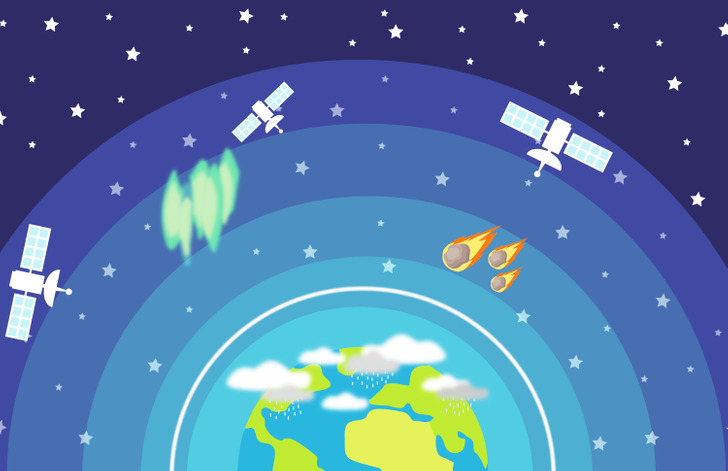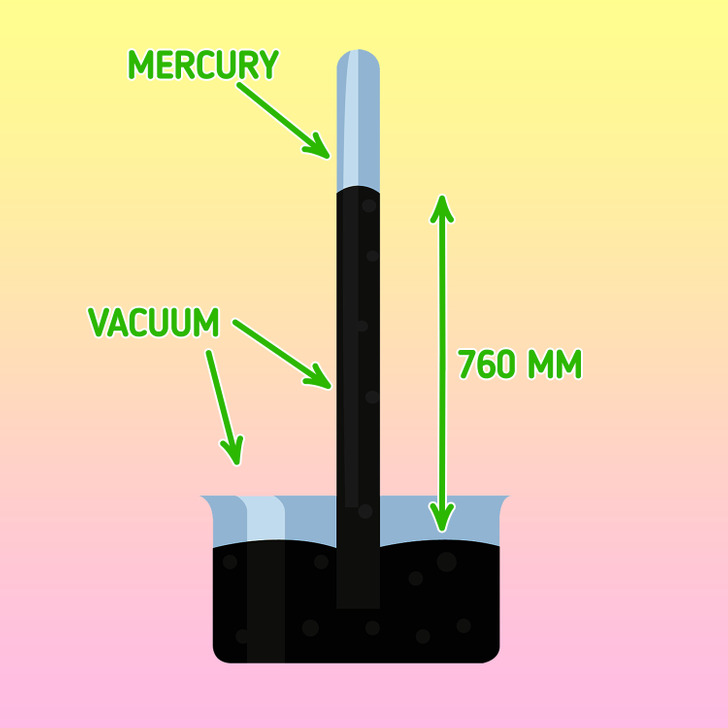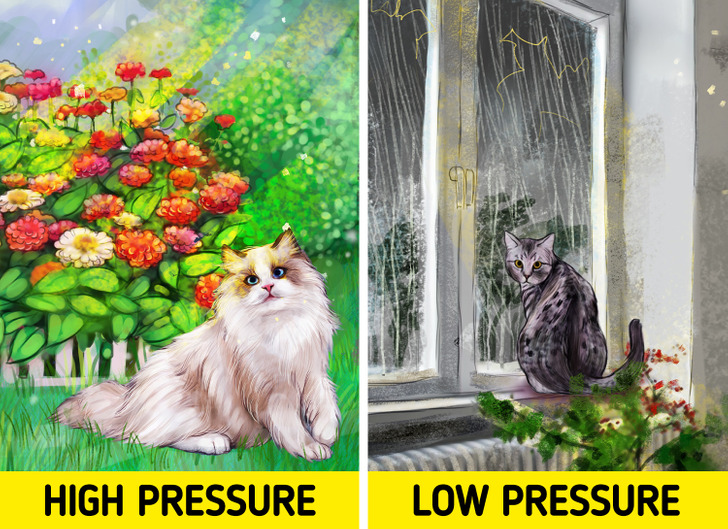What Atmospheric Pressure Is, and How It Affects Our Lives
We’ve known about atmospheric pressure since school. Maybe you even had a thing called a barometer at home that is used to measure atmospheric pressure. But it’s often difficult to explain what atmospheric pressure is and how it affects our everyday lives.
5-Minute Crafts decided to find out more about this phenomenon.
What the atmosphere is

Our planet is surrounded by an atmosphere — a layer of air where we can count several different layers. But the part of the atmosphere that sustains all life is relatively thin — it’s only about 18,000 feet. With higher altitudes, the air becomes thinner and thinner and, at some point, it merges into the vacuum of space.
The Earth’s atmosphere can be divided into 5 main layers: the troposphere, stratosphere, mesosphere, thermosphere, and exosphere. Here are their altitudes:
- Troposphere — 0-7 miles (where the weather forms)
- Stratosphere — 7-31 miles (where the ozone layer that absorbs solar radiation is)
- Mesosphere — 31-50 miles (the coldest place on the planet with an average temperature of about −120°F, where the meteors entering the atmosphere burn)
- Thermosphere — 50-440 miles (The air is so thin, one molecule has to travel a kilometer to bump into another molecule. There are some satellites circling around Earth and you can even see the Northern lights there sometimes.)
- Exosphere — 440 to 6,200 miles (The outer layer of the atmosphere that eventually merges into space and solar wind. The exosphere is not like gas, like the other layers. This is where most satellites of our planet are.)
What atmospheric pressure is

Based on the term, atmospheric pressure is the pressure of all the air located above a certain point on Earth. You probably know that it’s measured in millimeters of mercury. Let’s find out what it means.
Here’s a bit of history for you. In the seventeenth century, scientist Evangelista Torricelli conducted an experiment: he filled a long glass tube with mercury. The tube was open on one end and sealed on the other. After that, he put the tube with the open end into a cup of mercury. A part of the tube lowered, creating a vacuum in the upper section of the tube, but not all the mercury went down — some of it was still in the tube because the air was pressing the mercury in the cup and making it go into the tube.
This primitive thing proved that there is such a thing as air pressure, and it was the first barometer ever. One millimeter of mercury is approximately 1/760 of standard atmospheric pressure, so 760 mm is considered regular atmospheric pressure.
How atmospheric pressure changes, and what it means

We know that atmospheric pressure is not a constant. It’s dynamic. When it lowers, meteorologists believe that the weather will become worse, and if it’s high, it’s probably going to be warm and sunny. So what? The answer is simple: it’s the air temperature. The warm air, heated by the sun and promising good weather, is thicker and presses on the mercury (and all other things) much more than colder air.
Different atmospheric pressure numbers can be measured not only in different weather but also at different altitudes: the higher you are, the lower the pressure.
How atmospheric pressure affects our lives

Our bodies consist of liquids and gases. As the air pressure increases and decreases, the pressure on the body also changes. Low atmospheric pressure causes a difference between the pressure of the air outside and inside the body. It can lead to headaches, joint pain, sleep problems, and other biochemical changes.
How this works: our heads contain sinuses filled with air that are usually in equilibrium with the barometric pressure. But sudden weather changes create a difference in these pressures that leads to headaches and even migraines. Some people are more sensitive to air pressure changes, like, for example, older people and those with chronic stress.
You’ve probably heard people complaining about joint pain and old wounds hurting before the rain. Changes in atmospheric pressure may make your tendons, muscles, and any scar tissue expand and contract. Also, when the pressure drops, the blood vessels inside our bodies shrink, so in order to make the blood circulate, the body increases arterial pressure.